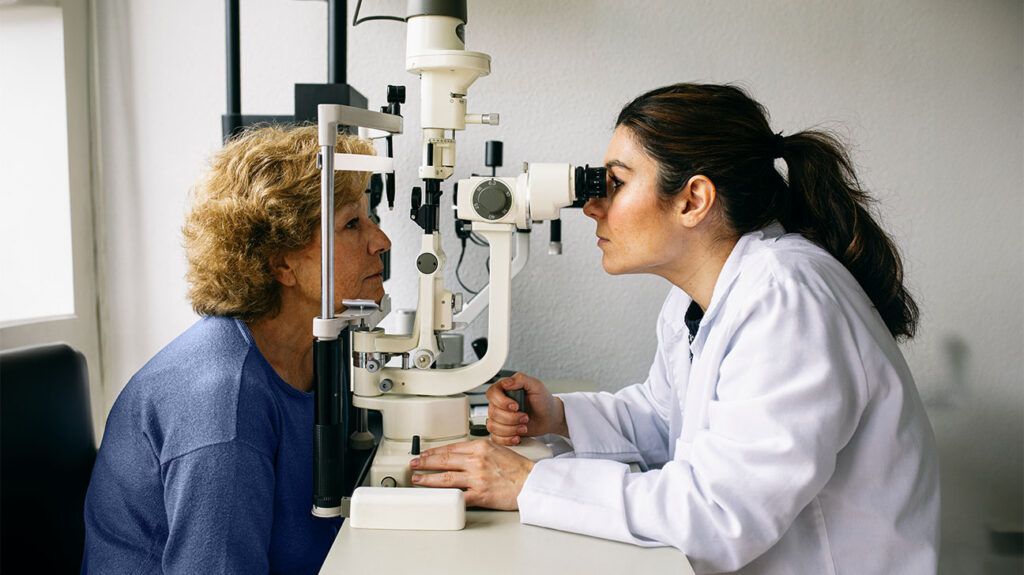Hypertensive retinopathy occurs due to high blood pressure, while diabetic retinopathy results from diabetes. Both are eye diseases affecting the retina.
Retinopathy is an eye disease affecting the retina, the light-sensitive cells at the back of the eye that give signals to the brain in order for us to see.
It occurs due to damage to the blood vessels of the retina.
This article looks at two types of retinopathies: Hypertensive retinopathy, due to high blood pressure, and diabetic retinopathy, due to diabetes.
Diabetes resources
Visit our dedicated hub for more research-backed information and in-depth resources on diabetes.

Hypertensive retinopathy and diabetic retinopathy are both eye conditions that result from damage to blood vessels in the retina.
The conditions can happen due to uncontrolled high blood pressure or diabetes.
With diabetic retinopathy, high blood sugar can
To counter the damaged blood vessels, the eye develops new, abnormal blood vessels. The new blood vessels are not as effective as the original blood vessels and may also leak fluid or bleed.
Hypertensive retinopathy happens
Without treatment, both hypertensive and diabetic retinopathy
The following table looks at the similarities and differences between hypertensive retinopathy and diabetic retinopathy.
| Hypertensive retinopathy | Diabetic retinopathy |
|---|---|
| It occurs due to high blood pressure, which causes damage to blood vessels of the retina. | It occurs due to |
| Symptoms include blurred or reduced vision and headaches. | Symptoms include blurred vision, increased number of floaters, dark or blank areas of vision, and vision loss. Vision changes |
| The | Treatment may include eye injections, laser treatment, or surgery. |
| Managing blood pressure | Managing diabetes |
| Treating high blood pressure may help to reverse damage to the retina. | Treatment |
The
In
Managing high blood pressure
- getting regular exercise
- eating a heart-healthy diet
- reducing salt intake
- managing stress
- quitting smoking
- limiting or avoiding alcohol
- maintaining a healthy weight
- taking any medications to control high blood pressure
- monitoring blood pressure and working alongside a healthcare professional
Treatment for diabetic retinopathy may include the following:
- Controlling diabetes: Managing blood sugar levels can help keep diabetes under control and may include a healthy diet, regular exercise, and diabetic medications.
- Anti-VEGF injections: These are injections of medication into the eye that help to reduce swelling of the macula, which forms part of the retina, and help reduce vision loss.
- Laser treatment: Laser surgery can help shrink abnormal blood vessels and close up leaking vessels to decrease retinal swelling.
- Vitrectomy: This is a surgical procedure that removes the vitreous, the gel-like substance in the eye, to allow light to reach the retina properly.
This section answers some frequently asked questions about hypertensive retinopathy and diabetic retinopathy.
How is hypertensive retinopathy different from normal retina?
Hypertensive retinopathy causes damage to the retina. High blood pressure damages the blood vessels to the retina,
Treating high blood pressure can help stop these changes to the retina from progressing.
What are the four types of retinopathies?
The
- diabetic retinopathy, which occurs due to diabetes and is the most common type
- hypertensive retinopathy, which results from high blood pressure
- retinopathy of prematurity, which can occur in premature newborns with low birth weight
- age-related macular degeneration, which happens due to damage to the macula, part of the retina
What are the two most common findings with hypertensive retinopathy?
Two common findings that indicate hypertensive retinopathy are flame-shaped hemorrhages and cotton-wool patches.
Flame-shaped hemorrhages are an area of bleeding in the retina that look like flames, due to the feathery, undefined edges.
Cotton-wool patches are small white dots on the retina, which occur due to a lack of blood flow to the retina.
Retinopathy is the term for an eye disease affecting the retina.
Hypertensive retinopathy occurs due to high blood pressure, while diabetic retinopathy occurs due to diabetes.
Both high blood pressure and high blood sugar can cause damage to the blood vessels connecting to the retina, which may negatively affect vision.
Managing high blood pressure can treat hypertensive retinopathy and prevent further damage to the retina. Managing diabetes, eye injections, laser treatment, and surgery can help treat diabetic retinopathy.
